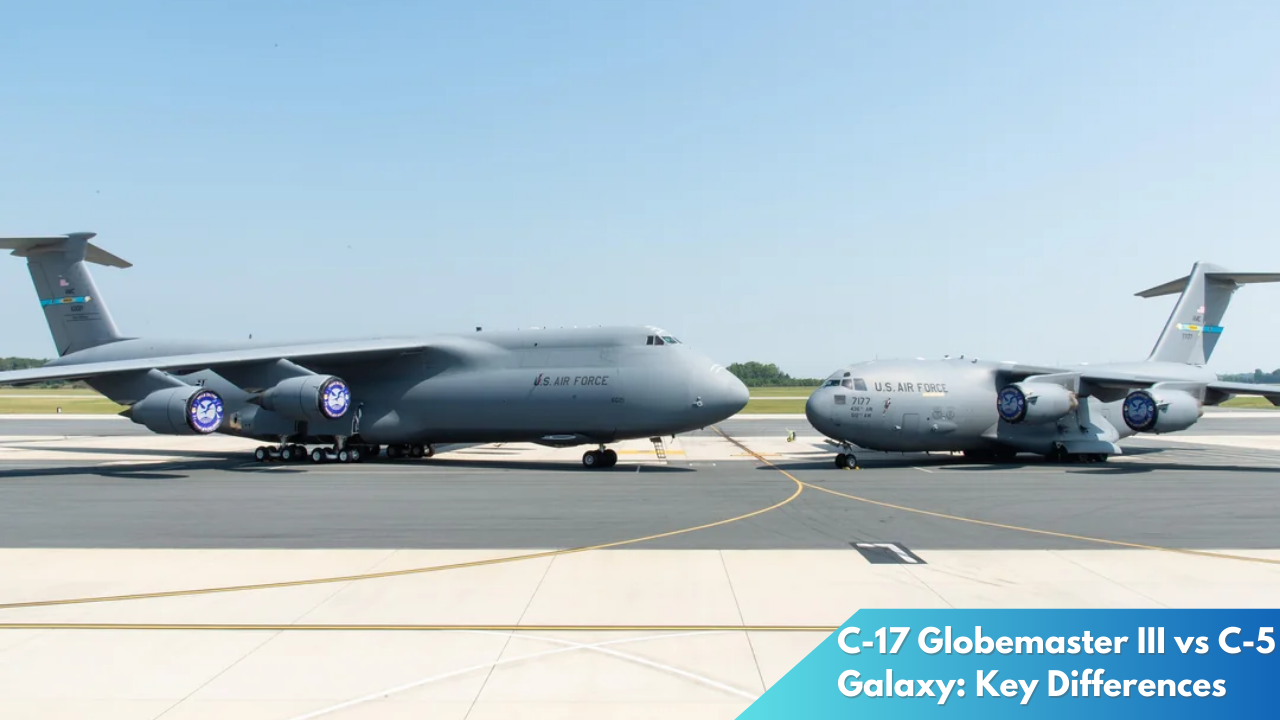C-17 Globemaster III vs C-5 Galaxy: Key Differences
In the realm of military airlift capabilities, two aircraft stand as titans of the sky: the C-17 Globemaster III and the C-5 Galaxy. Both are integral to the strategic and tactical operations of the United States Air Force, serving as crucial components in transporting troops, equipment, and humanitarian aid worldwide. While they share some similarities in terms of their mission profiles, these two aircraft display a wide range of differences in design, capabilities, and operational efficiencies. This article delves into the key distinctions between the C-17 Globemaster III and the C-5 Galaxy, highlighting their respective strengths and roles within the military.
Comparing Giants: C-17 Globemaster III vs C-5 Galaxy

The C-17 Globemaster III, introduced into service in the 1990s, is renowned for its versatility and relatively compact size compared to the larger C-5 Galaxy. Designed for both strategic and tactical airlift missions, the C-17 can operate in diverse environments, including short and unpaved runways, which makes it invaluable for rapid deployment and troop movements in conflict zones. In contrast, the C-5 Galaxy, which has been in service since the late 1960s, was specifically developed to maximize strategic airlift capabilities. It holds the distinction of being one of the largest military aircraft in the world, capable of carrying hefty payloads over intercontinental distances without refueling.
When it comes to operational roles, both aircraft have their unique niches. The C-5 is predominantly used for massive logistical operations, such as moving large volumes of cargo, helicopters, and even tanks. Its spacious cargo bay is unmatched, allowing for significant amounts of military hardware to be transported across vast distances. On the other hand, the C-17 excels in scenarios requiring flexibility and speed, often utilized in rapid-response and humanitarian missions where time and diverse landing conditions are critical factors. This adaptability has cemented the C-17’s reputation as a workhorse of the Air Mobility Command.
In terms of global presence, both aircraft have demonstrated their importance in international operations. The C-5 Galaxy has been instrumental in supporting U.S. military initiatives during major conflicts like the Gulf War and the Afghanistan campaign, thanks to its ability to transport oversized cargo. Meanwhile, the C-17 has gained prominence for its role in disaster relief missions, such as delivering vital supplies during the Haiti earthquake and the ongoing COVID-19 pandemic. These missions underscore the complementary nature of these aircraft; while the C-5 focuses on strategic transport, the C-17 ensures tactical and humanitarian reach.
Key Differences in Capabilities and Design

One of the most apparent differences between the C-17 Globemaster III and the C-5 Galaxy lies in their size and carrying capabilities. The C-5 Galaxy is considerably larger, boasting a maximum payload capacity of around 135 tons compared to the C-17’s 77.5 tons. This vast capacity enables the C-5 to carry more oversized and heavier equipment, making it the go-to choice for missions involving extensive military assets. Additionally, the Galaxy’s impressive range allows it to traverse around 5,500 miles without refueling, surpassing the C-17’s range of approximately 2,400 miles. This range distinction makes the C-5 more suitable for long-haul missions where refueling opportunities are limited.
Another key difference is in their design philosophies. The C-17 is engineered with an emphasis on tactical flexibility; it features advanced aerodynamics and control systems that allow it to operate in austere environments. Its ability to perform tactical maneuvers such as reverse thrust landings enables it to land on shorter, less-prepared airstrips, providing a tactical advantage in combat and relief operations. Conversely, the C-5’s design is more focused on maximizing volume and efficiency for strategic lifts. Its distinctive “nose-up” cargo loading capability allows for quick loading and unloading, critical for efficiency despite its massive size.
Furthermore, advancements in technology and materials reflect their generational differences. The C-17, being a newer aircraft, benefits from modern avionics and fly-by-wire technology, which contribute to its sophisticated handling abilities. The C-5 Galaxy, while undergoing upgrades over the years, still retains some elements of its earlier engineering, which can present challenges in terms of maintenance and operational costs. In this regard, the C-17’s newer design offers a more cost-effective solution in terms of fuel efficiency and maintenance, providing an edge in current military logistics where budget efficiency is paramount.
The C-17 Globemaster III and the C-5 Galaxy each play vital roles within the U.S. Air Force’s airlift capabilities, each with distinct advantages suited to different mission requirements. The C-5’s unparalleled capacity and range make it indispensable for strategic operations involving substantial equipment and long distances. Meanwhile, the C-17 offers unmatched versatility and agility, essential for rapid deployment and operations in challenging environments. Together, they form a complementary duo that ensures the U.S. military can project power and provide aid whenever and wherever needed. As military needs evolve, these aircraft will continue to adapt, ensuring their place in the skies for years to come.



